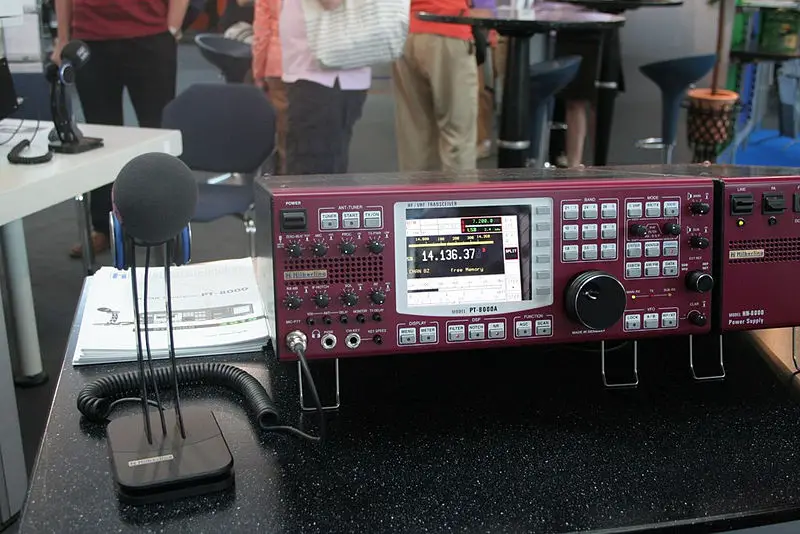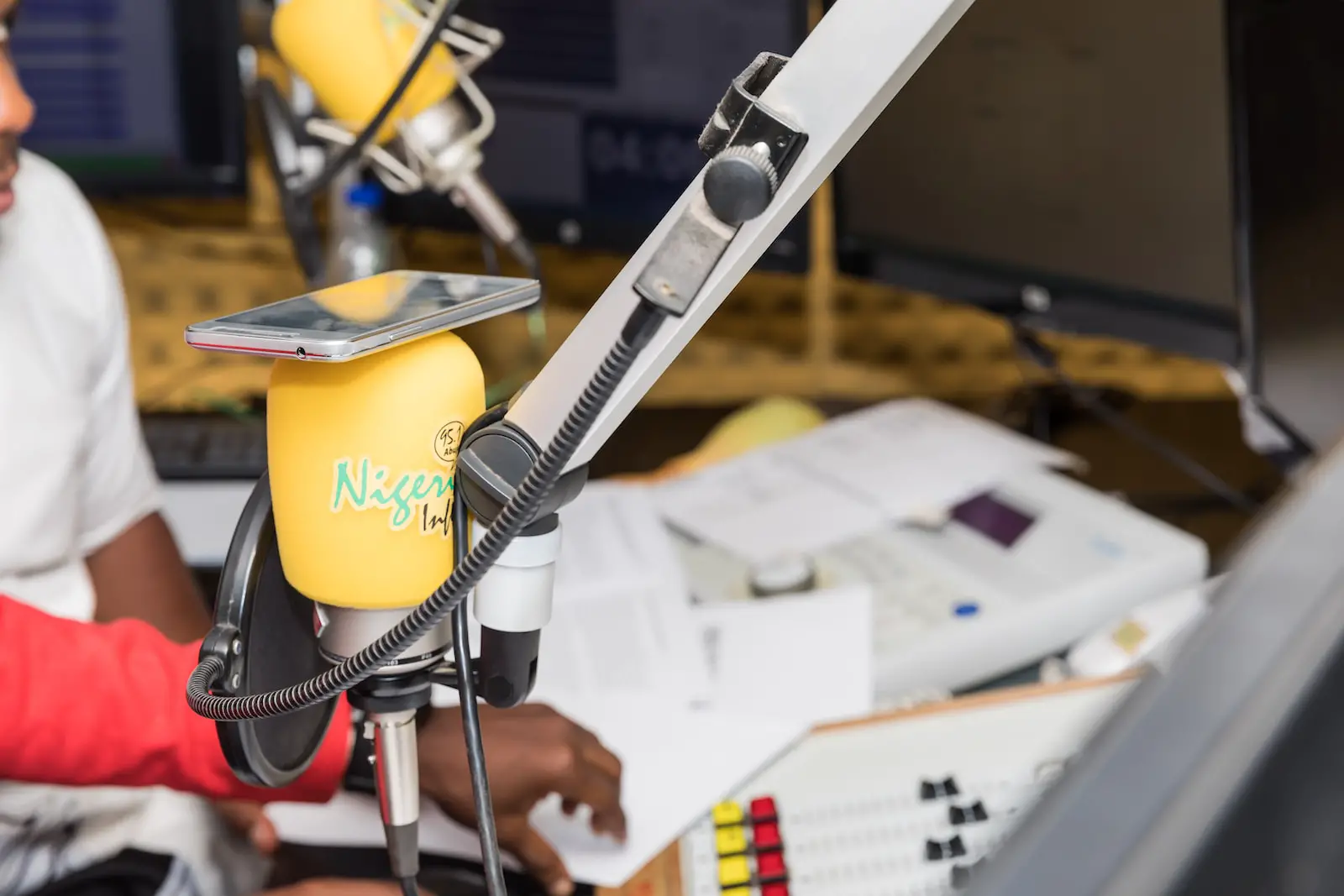Ham Radio requires specific equipment, yet some basic components are essential for any setup.
- First, a transceiver is required to send and receive signals. Models range from simple handhelds to advanced base stations.
- An antenna is significant to successful communication. It depends on range and location, with wire, vertical, and yagi antennas being popular.
- A power source, such as a battery or power unit, must provide electricity. Accessories such as headphones, mics, and cables are also essential.
- To improve performance, consider an antenna tuner, filters to reduce interference, and amplifiers for increased power.
- Check out our ham radio beginner’s guide for more detail!
The right equipment is imperative for smooth Ham Radio communication. Each component serves a distinct purpose: the transceiver for transmission/reception; the antenna for range; the power supply for operation; and accessories for usability.
With proper selection and use of these elements, radio operators can explore the world of amateur radio with clear, reliable communication.
Ham radio, also called amateur radio, is a fantastic hobby. To get into this world, you need specific gear. Radios, antennas, power supplies, and accessories make all the difference in having a successful experience.
When it comes to ham radios, there are many choices. Handheld transceivers or base station radios come with features like frequency bands, output power, GPS, and digital modes. It’s essential to pick one that fits your needs and budget.
Antennas are also essential. Types include wire antennas, vertical antennas, Yagi antennas, and dipole antennas. Each has advantages and limitations based on space, desired frequency, and direction.
Other accessories are helpful too. A power supply is needed. SWR meters calibrate antenna performance. Signal filters reduce interference. Headphones or speakers improve audio quality.
The history of ham radio goes back over 100 years. Amateurs experimented, and hams played essential roles in WW2. They show their value as a reliable communication method in emergencies or disasters. Today, millions of enthusiasts use ham radios to connect across long distances.
Understanding Ham Radio

Ham radio is notable for its flexibility. You can communicate using voice, Morse code, digital signals, and satellite links!
But, you must get a license from the regulatory authority in your country.
The ham radio community is solid and supportive. People join clubs to partake in activities, contests, and service events.
Plus, it’s a great way to learn electronics and antenna design and experiment with tech.
It’s also a reliable backup in emergencies, as it is portable and self-sufficient.
Ham radio has been around since the early 20th century, growing with technological advancements.
Setting Up Your Ham Radio Station
Creating your ham radio station demands special gear and careful organizing. Follow these steps to make a valuable and practical setup:
- Choose the correct radio: Research a ham radio that fits your desires and budget. Think of factors like power output, frequency range, and available features.
- Antenna installation: Erect an ideal antenna, verifying it is set high enough for best signal transfer and reception. Consider the type of antenna that works best for your desired communication distance.
- Grounding system: Make a proper grounding system to protect your equipment from lightning strikes and static electricity. Talk to experts or refer to instructions given by professional organizations.
- Power supply: Decide how you will power your ham radio station—batteries, generators, or connecting to mains electricity with suitable safety measures.
- Operating position setup: Select a comfortable space for running your ham radio station. Put equipment such as transceivers, antennae tuners, amplifiers, and microphones in a convenient design for simple access during operation.
- Testing and fine-tuning: Execute tests to ensure all components function correctly before the regular operation starts. Change settings and make necessary changes based on performance studies.
Additionally, keep in mind these details when setting up your ham radio station:
- Ask experienced operators or join local amateur radio clubs for assistance based on your specific area.
- Comprehend local regulations concerning licensing requirements, frequency allocations, and permitted transmission power levels.
- Learn about propagation patterns and their influence on long-distance communication.
- Have an emergency backup power source ready in case of power cuts or other unforeseen situations.
By following these steps and taking into account these details when setting up your ham radio station, you can make a solid communication system capable of connecting you to fellow hobbyists worldwide.
Operating Your Ham Radio
Operating a ham radio efficiently requires several considerations. Here are some steps to help you get started:
- Know the frequencies and use them as your license class suggests.
- Set up the radio, antenna, power supply, and accessories appropriately.
- Learn how to use the controls and settings for best performance.
- Hone your listening skills to decode signals and get the messages.
- Be precise in communication, using clear and concise language.
- Follow standard operating procedures to maintain order.
- Remember, your radio model or license class may have special requirements.
- Explore the ham radio community and connect with similar people worldwide! Get started now!
Troubleshooting and Maintenance
Inspect and clean your equipment regularly for optimal performance. Check connections for damage or corrosion. Test antennas to make sure they are properly tuned and functioning. Keep up-to-date with the latest firmware and software updates. Log any issues you encounter and their resolutions.
Moreover, maintenance and troubleshooting vary depending on the equipment used. Read the manufacturer’s guidelines or get help from experienced ham radio operators. Have spare parts like cables, connectors, fuses, and tubes to fix unforeseen issues quickly. This proactive approach minimizes downtime.
In the past, ham radio troubleshooting and maintenance relied on the operator’s technical knowledge. They tried different configurations and created solutions not documented by manufacturers. This hands-on approach promoted knowledge sharing between enthusiasts, improving troubleshooting techniques.
Conclusion
Having the right equipment is necessary for the success and enjoyment of ham radio. Transceivers, antennas, and power supplies are the essential pieces. Get a quality transceiver that fits your needs and preferences. There are lots of antenna types – wire, vertical, and beam. A power supply is essential for running equipment.
Accessorize with a microphone, headphones, and an SWR meter. Cables and connectors are essential for minimal signal loss. Safety gear like ear protection and a fire extinguisher is wise. Don’t miss out on amateur communication! Gather the equipment and explore the ham radio’s possibilities. Happy transmitting!
Frequently Asked Questions
FAQs about What Equipment Is Needed For Ham Radio:
1. What equipment do I need to get started with a ham radio?
To start with a ham radio, you will need a transceiver (radio), an antenna, a power supply, and some coaxial cable. These are the essential components you need to establish communication.
2. Do I need a license to operate ham radio equipment?
Yes, you need a license to operate ham radio equipment legally. In most countries, you must pass an examination to obtain a permit. The permit ensures that operators understand the rules and regulations of ham radio.
3. Can I use any transceiver with any antenna?
It is essential to match your transceiver with the appropriate antenna. Different antennas are designed for specific frequency ranges, and using an incompatible antenna can result in poor performance or damage to the equipment.
4. What types of antennas are commonly used in ham radio?
Common antennas used in ham radio include dipole, vertical, Yagi, and loop antennas. Each type has advantages and disadvantages, and the choice depends on factors such as your location, the frequency bands you wish to operate on, and your specific needs.
5. Do I need a dedicated room or space for ham radio equipment?
You don’t necessarily need a dedicated room, but having a designated space for your ham radio equipment is beneficial. It allows you to organize and set up your station more efficiently. Additionally, it helps minimize interference from other electronic devices.
6. How much does ham radio equipment cost?
The cost of ham radio equipment can vary greatly depending on your desired quality and features. A basic setup can cost a few hundred dollars, while high-end equipment can cost several thousand dollars. Researching and setting a budget based on your needs and interests is a good idea.



